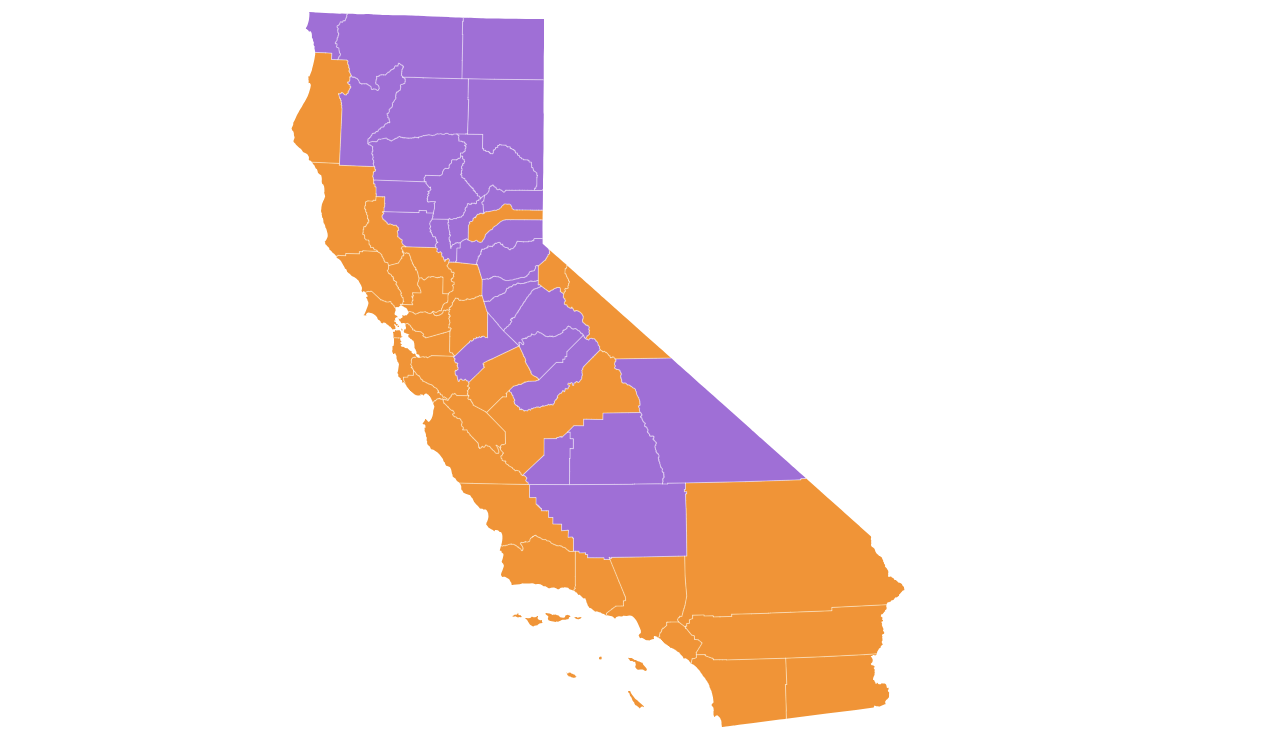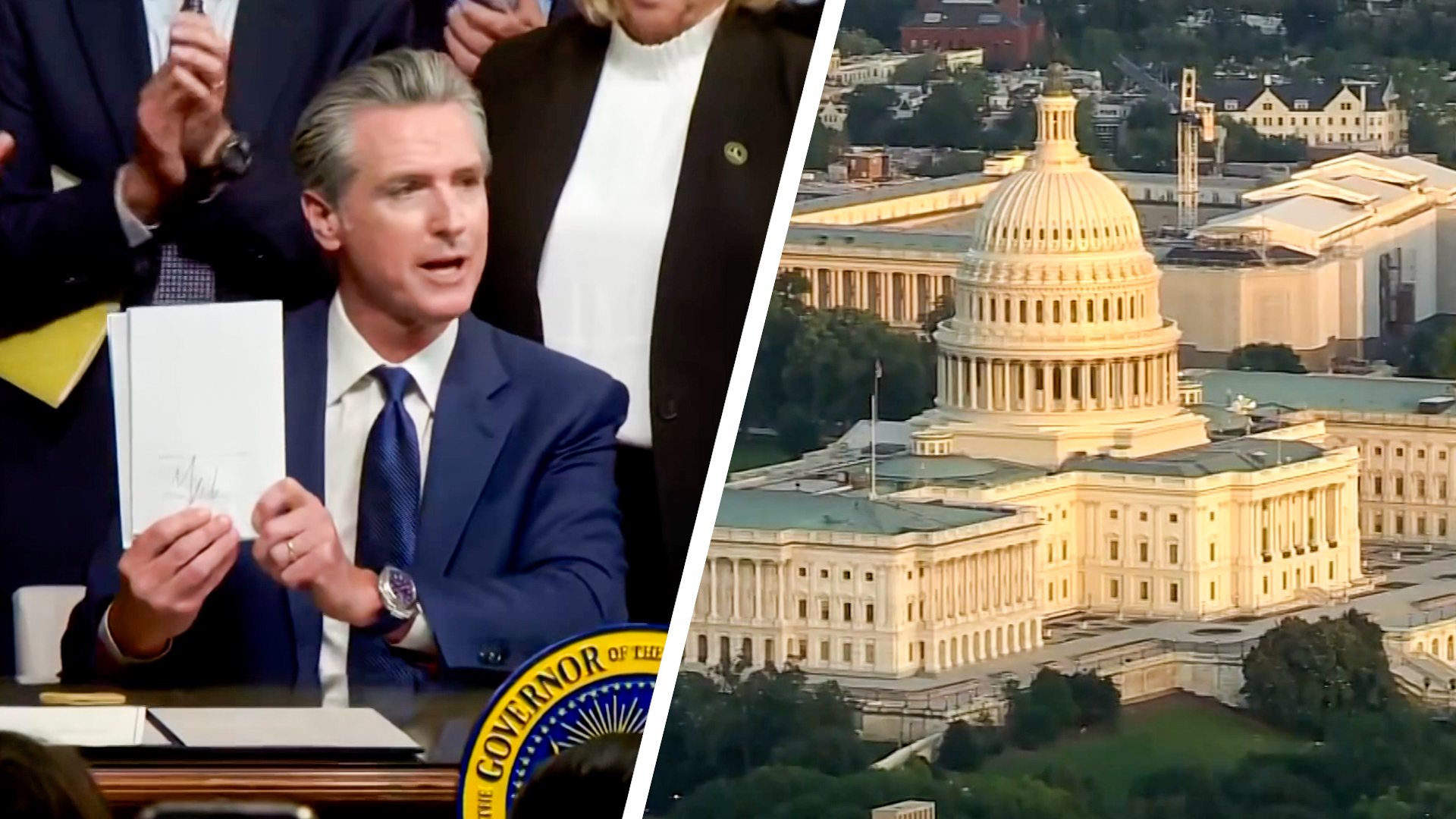What to Know
- Prop 50 was the only question before voters in Tuesday’s California special election.
- The measure asked the state’s 23 million registered voters whether they authorize temporary changes to congressional district maps approved by state lawmakers.
- Congressional district maps are usually redrawn once a decade after each census and by an independent voter-approved redistricting commission in California.
- Prop 50 is a response led by Gov. Gavin Newsom and Democrats to redistricting in Texas that came at the urging of President Trump in an effort to gain Republican seats in the U.S. House.
- Prop 50 opens a path to flip up to five of 435 U.S. House seats in favor of Democrats.
- Republicans Ken Calvert and Darrell Issa issued defiant statements in the after the Prop 50 election.
Two Republican members of California’s U.S. House delegation vowed to continue to fight to remain in Congress after voters were projected to overwhelmingly approve a statewide ballot measure that redraws voting maps for the 2026 midterm elections in favor of Democrats.
Rep. Ken Calvert, who represents one of the districts at the heart of the battle over Prop 50, said in a statement that he is “determined to keep fighting for the families I represent in Congress.”
“With the passage of Prop 50, Californians were sold a bill of goods, allowing Gavin Newsom and his radical allies in Sacramento an unprecedented power grab to redraw the Congressional map and silence those who disagree with his extreme policies,” Calvert said in a statement. “Gerrymandering districts because you don’t like the results of an election is politics at its absolute worst. Governor Newsom pouring millions into this ballot initiative while crime goes unchecked, housing costs skyrocket, and taxes as well as gas prices remain among the highest in the nation shows he’s more interested in protecting his party’s stranglehold on the state than delivering on the issues families face.
“Despite the passage of Prop 50, I am determined to keep fighting for the families I represent in Congress.”
California Republicans announced plans for a legal challenge Wednesday morning.
Prop 50 was projected to pass with a margin of 63.8% to 36.2% early Wednesday morning after significant voter turnout in the November election. The last day to cast ballots was Tuesday, but more than 7 million ballots had already been cast before Election Day.
Calvert’s House District 41 covers areas from Corona east to Palm Desert, but changes under Prop 50. The district loses voters in Riverside County and gain more in Los Angeles County. Cities in the district include Corona, Norco, Lake Elsinore, Wildomar, Canyon Lake, Menifee, Calimesa, Palm Springs, Palm Desert, Rancho Mirage, La Quinta, Indian Wells, and portions of Eastvale and Riverside.
Calvert is a senior member of the House of Representative who was first elected to the body in 1992.
Farther south, Republican Darrell Issa will see changes to the district he represents. House District 48 includes San Diego and the Temecula Valley, and stretches from Murrieta south to the U.S.-Mexico border. Under Prop 50, the district extends north to include Menifee, Hemet and Palm Springs in a shift that could bring more Democrats into the fold.
Issa was defiant in a statement issued Tuesday.
“California is my home. And it’s worth fighting for,” Issa said. “I know how many of my friends and constituents feel about tonight’s election results and the unprecedented purely partisan campaign that pitted neighbor against neighbor and divided the state as never before. It was difficult to watch as Gavin Newsom and Sacramento’s special interests set about shredding the state constitution, disenfranchising millions of Californians solely because of how they vote, and delivering what they know is an undeserved advantage to Democrats.
“But here’s something Newsom and his cronies don’t know: It won’t work. The worst gerrymander in history has a fatal flaw. Voters get to pick their representatives. Not the other way around. I’m not going anywhere. I’ll continue to represent the people of California — regardless of their party or where they live. I’m not quitting on California. And neither should anyone else.”
Will your district change?
See how your congressional district will change if the proposed map goes into effect.
var pymParent = new pym.Parent(‘ca-district-finder’, ‘https://visuals.otsops.com/projects/ca-district-finder/index.html’, {title: ”, parenturlparam: ”, parenturlvalue: ”});
Source: California State Assembly, The Downballot
Graphic: Tejal Wakchoure
In three Northern California counties that threw strong support behind President Trump in the last three elections, Prop 50 carves into those areas to bring more influence from some of the state’s wealthiest and most liberal coastal communities. Under the new maps, voters in Shasta, Siskiyou and Modoc counties, conservative strongholds, join the same congressional district with Marin County, just across the Golden Gate Bridge from San Francisco.
The measure had little support in Northern California. “No” votes were at 79% percent in Lassen County and 78% in neighboring Modoc County in extreme northeastern California.
About Prop 50
Prop 50, named for the 50 states and the only question on ballot in the Tuesday statewide special election, was placed before the California’s 23 million registered voters as a counter to redistricting in Texas at the urging of President Trump that gives more seats to Republicans. The California measure, placed on the ballot by Gov. Gavin Newsom and the California Legislature, was a yes-or-no question that asked voters whether they authorize temporary changes to congressional district maps already approved by state lawmakers.
The changes could flip as many as five of 435 U.S. House seats in favor of Democrats.
The new congressional district maps approved by lawmakers in August would be used for the next three election cycles. After the 2030 U.S. Census, California’s independent redistricting commission would resume drawing the maps.
The next election for all U.S. House seats is 2026. Republicans have a slim 219-213 margin with three vacancies.
Voting districts are typically redrawn just once a decade after each census, but a national battle erupted over partisan gerrymandering this year in Texas when the Republican-controlled state adopted a new map in August that could flip five Democratic-leaning U.S. House seats. California responded in an effort led by Gov. Newsom. Missouri and North Carolina both adopted new maps and other states may soon follow.
California Democrats already hold 43 of the state’s 52 congressional seats. That number could jump to 48, if Prop 50 is approved and voters favor the Democratic candidates in those redrawn districts.
There are 10.3 million registered Democrats and 5.8 million registered Republicans in California, according to the Secretary of State. About 5.2 million voters were not registered with any party.
This story uses functionality that may not work in our app. Click here to open the story in your web browser.

Want more insights? Join Working Title - our career elevating newsletter and get the future of work delivered weekly.



